Inigo Alonso
Semi-Supervised Semantic Segmentation with Pixel-Level Contrastive Learning from a Class-wise Memory Bank
Apr 27, 2021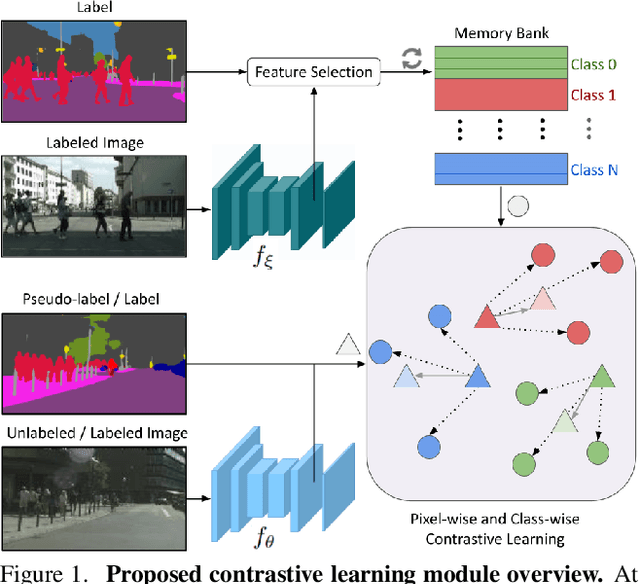
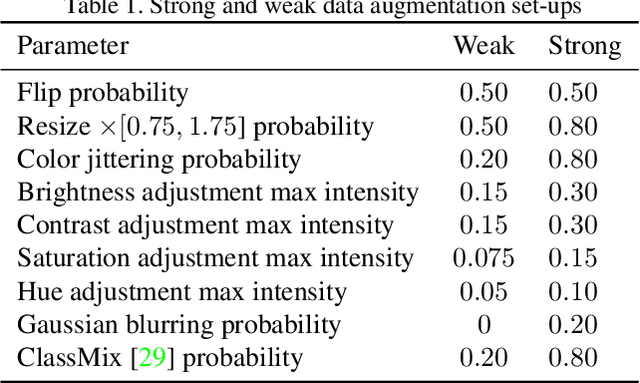
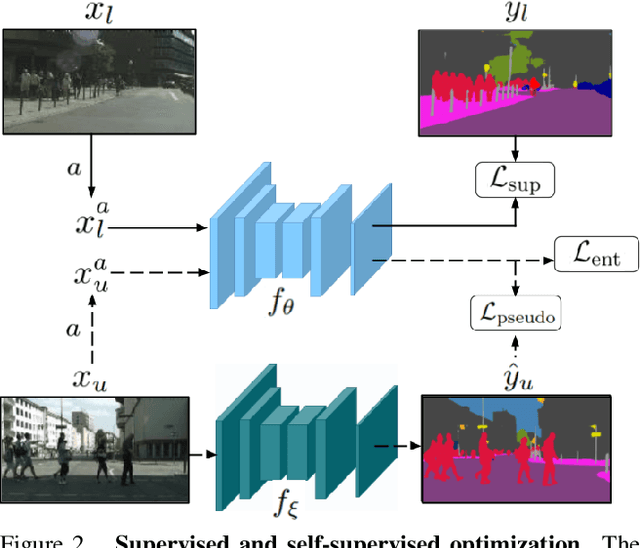
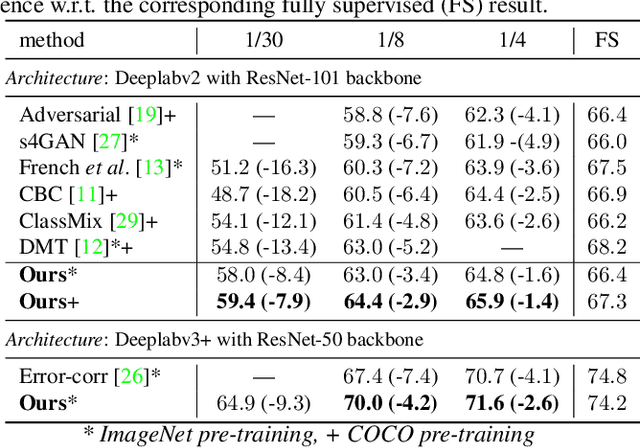
Abstract:This work presents a novel approach for semi-supervised semantic segmentation, i.e., per-pixel classification problem assuming that only a small set of the available data is labeled. We propose a novel representation learning module based on contrastive learning. This module enforces the segmentation network to yield similar pixel-level feature representations for same-class samples across the whole dataset. To achieve this, we maintain a memory bank continuously updated with feature vectors from labeled data. These features are selected based on their quality and relevance for the contrastive learning. In an end-to-end training, the features from both labeled and unlabeled data are optimized to be similar to same-class samples from the memory bank. Our approach outperforms the current state-of-the-art for semi-supervised semantic segmentation and semi-supervised domain adaptation on well-known public benchmarks, with larger improvements on the most challenging scenarios, i.e., less available labeled data.
Domain Adaptation in LiDAR Semantic Segmentation
Oct 23, 2020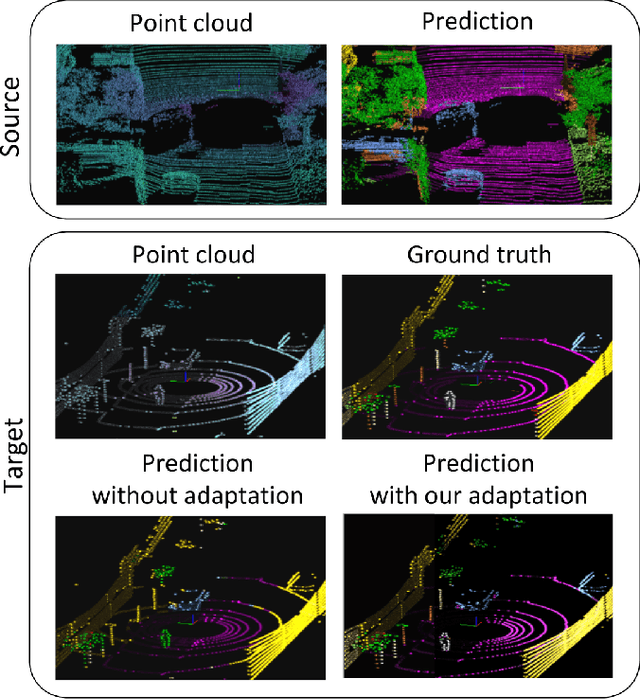
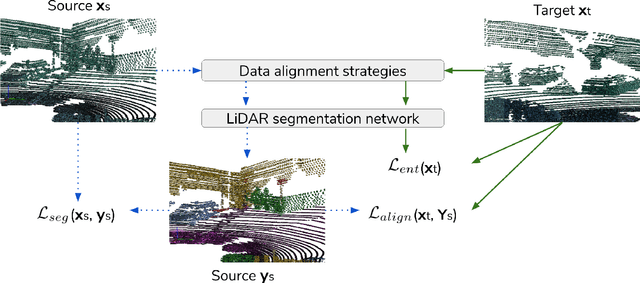
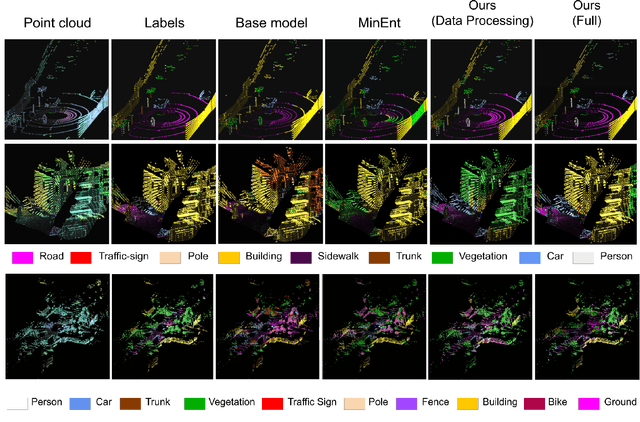
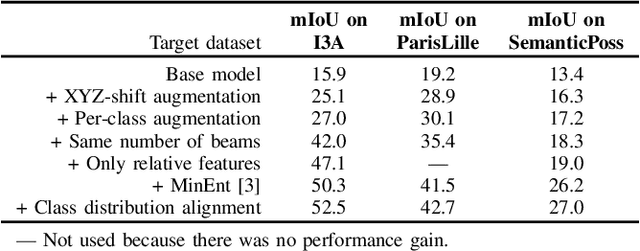
Abstract:LiDAR semantic segmentation provides 3D semantic information about the environment, an essential cue for intelligent systems during their decision making processes. Deep neural networks are achieving state-of-the-art results on large public benchmarks on this task. Unfortunately, finding models that generalize well or adapt to additional domains, where data distribution is different, remains a major challenge. This work addresses the problem of unsupervised domain adaptation for LiDAR semantic segmentation models. Our approach combines novel ideas on top of the current state-of-the-art approaches and yields new state-of-the-art results. We propose simple but effective strategies to reduce the domain shift by aligning the data distribution on the input space. Besides, we propose a learning-based approach that aligns the distribution of the semantic classes of the target domain to the source domain. The presented ablation study shows how each part contributes to the final performance. Our strategy is shown to outperform previous approaches for domain adaptation with comparisons run on three different domains.
 Add to Chrome
Add to Chrome Add to Firefox
Add to Firefox Add to Edge
Add to Edge